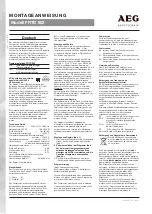UM10503
All information provided in this document is subject to legal disclaimers.
© NXP B.V. 2012. All rights reserved.
User manual
Rev. 1.3 — 6 July 2012
908 of 1269
NXP Semiconductors
UM10503
Chapter 31: LPC43xx Quadrature Encoder Interface (QEI)
31.7 Functional description
The QEI module interprets the two-bit gray code produced by a quadrature encoder wheel
to integrate position over time and determine direction of rotation. In addition, it can
capture the velocity of the encoder wheel.
31.7.1 Input signals
The QEI module supports two modes of signal operation: quadrature phase mode and
clock/direction mode. In quadrature phase mode, the encoder produces two clocks that
are 90 degrees out of phase; the edge relationship is used to determine the direction of
rotation. In clock/direction mode, the encoder produces a clock signal to indicate steps
and a direction signal to indicate the direction of rotation.).
This mode is determined by the SigMode bit of the QEI Control (CON) register (See
). When the SigMode bit = 1, the quadrature decoder is bypassed and the PhA
pin functions as the direction signal and PhB pin functions as the clock signal for the
counters, etc. When the SigMode bit = 0, the PhA pin and PhB pins are decoded by the
quadrature decoder. In this mode the quadrature decoder produces the direction and
clock signals for the counters, etc. In both modes the direction signal is subject to the
effects of the direction invert (DIRINV) bit.
31.7.1.1 Quadrature input signals
When edges on PhA lead edges on PhB, the position counter is incremented. When
edges on PhB lead edges on PhA, the position counter is decremented. When a rising
and falling edge pair is seen on one of the phases without any edges on the other, the
direction of rotation has changed.
[1]
All other state transitions are illegal and should set the ERR bit.
Interchanging of the PhA and PhB input signals are compensated by complementing the
DIR bit. When set = 1, the direction inversion bit (DIRINV) complements the DIR bit.
Table 752. Encoder states
Phase A
Phase B
state
1
0
1
1
1
2
0
1
3
0
0
4
Table 753. Encoder state transitions
from state
to state
Direction
1
2
positive
2
3
3
4
4
1
4
3
negative
3
2
2
1
1
4


















